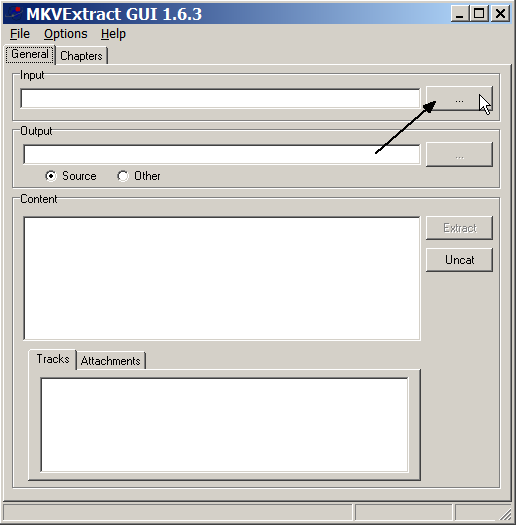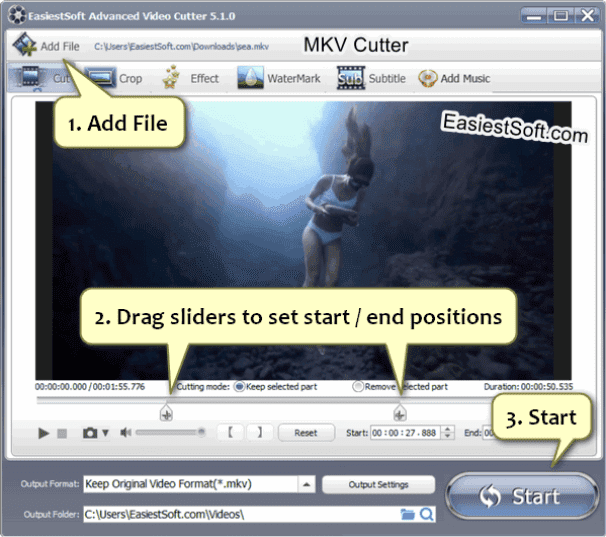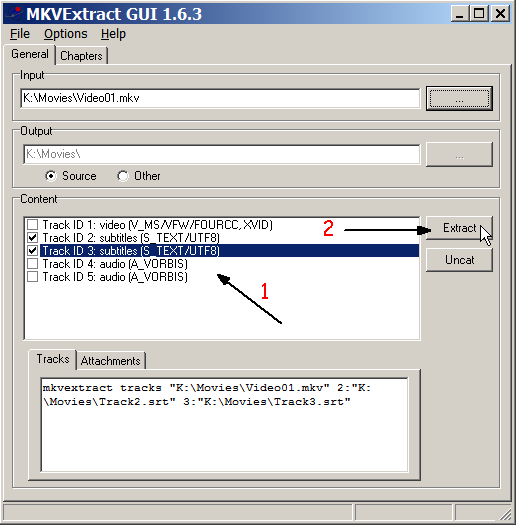Ever wondered what makes Matroska file such a game-changer in the world of digital media? If you're into movies, music, or any kind of multimedia content, you're probably familiar with file formats like MP4, AVI, or even FLV. But there's a rising star in this space—the Matroska file, or MKV as it's more commonly known. Today, we're diving deep into what makes MKV so special and why it’s quickly becoming the go-to format for media enthusiasts worldwide.
You might be thinking, "Why should I care about file formats?" Well, here's the deal: the format you choose can significantly impact the quality, compatibility, and overall experience of your media. Whether you're a casual watcher or a tech-savvy professional, understanding the ins and outs of the Matroska file can unlock a whole new level of enjoyment and efficiency.
So, buckle up because we're about to take you on a journey through the world of MKV. From its origins to its advantages, we'll cover everything you need to know to make the most out of this versatile file format. Let’s get started!
Read also:Dick Van Dyke The Legendary Star Who Lit Up Our Screens And Hearts
Here's the quick rundown of what we'll be exploring:
- What is Matroska File?
- Benefits of Using Matroska File
- Key Features of MKV
- MKV Compatibility with Devices
- Converting to and from Matroska
- How to Play MKV Files
- Common Issues with MKV
- MKV vs Other Formats
- Security Concerns with MKV
- Future Trends in Matroska Technology
What is Matroska File?
Alright, let's start with the basics. A Matroska file, or MKV, is a multimedia container format designed to hold an unlimited number of video, audio, picture, or subtitle tracks in a single file. Think of it like a digital Swiss Army knife for your media needs. It's open-source, meaning anyone can use and modify it without worrying about licensing fees. Cool, right?
The name "Matroska" comes from the Russian nesting doll, which kinda sums up its philosophy—layered, versatile, and capable of holding a lot more than you'd expect. This format isn't just about storing video and audio; it's about creating an all-in-one experience where everything you need is in one place.
Origins of the Matroska Format
Back in 2002, the Matroska team decided that the world needed a better way to handle multimedia files. Traditional formats like AVI were clunky and limited, so they set out to create something new. Fast forward to today, and MKV has become one of the most popular formats around. It's like the underdog story of file formats—starting small but growing into something truly remarkable.
Benefits of Using Matroska File
Now that we know what MKV is, let's talk about why it's worth using. Here are some of the top reasons:
- Flexibility: MKV can store virtually any type of media, including high-definition video, lossless audio, and even 3D content.
- Compatibility: It works across a wide range of devices and platforms, making it super convenient for users.
- Scalability: Need to add subtitles or extra audio tracks? No problem. MKV makes it easy to customize your files without losing quality.
- Open-source: Being open-source means it's free to use, and developers can continually improve and expand its capabilities.
These benefits make MKV a no-brainer for anyone looking to enhance their multimedia experience. But wait, there's more!
Read also:Bronson Pinchot The Multifaceted Actor Who Stole Hearts With His Talent And Wit
Key Features of MKV
1. Advanced Subtitle Support
One of the standout features of MKV is its robust subtitle support. Whether you're watching a foreign film or need closed captions, MKV has got you covered. You can add multiple subtitle tracks, adjust timing, and even customize the font and size. It's like having a personal translator built right into your file.
2. Chapter Markers
Ever tried to find a specific scene in a long movie only to spend 10 minutes fast-forwarding? MKV eliminates that frustration with chapter markers. These let you easily navigate through your content, jumping to different sections with just a click.
3. Lossless Compression
Quality is king when it comes to media, and MKV doesn't skimp on it. Using advanced compression techniques, it ensures that your files remain crystal clear without taking up too much space. It's like having a Ferrari that gets great gas mileage—fast and efficient.
MKV Compatibility with Devices
So, you've got your shiny new MKV file. But will it play on your device? The good news is that MKV is compatible with a wide range of platforms, including Windows, macOS, Linux, Android, and iOS. Most modern media players, like VLC and MPC-HC, support MKV out of the box. Even smart TVs and game consoles are getting on board with this versatile format.
However, if you're using an older device or software, you might need to install additional codecs or converters. Don't worry, though—it's a quick and painless process that opens up a whole new world of possibilities.
Converting to and from Matroska
Let's say you've got a bunch of files in other formats, like MP4 or AVI, and you want to switch to MKV. No problem! There are plenty of tools available that make conversion a breeze. Programs like HandBrake and FFmpeg are great options for converting your files while maintaining their quality.
And what if you need to convert MKV to another format? Maybe you're sharing a file with someone who doesn't have the right software. Again, tools like HandBrake or Online-Convert can help you out. Just remember, converting can sometimes lead to a loss in quality, so it's always best to keep your original MKV file as a backup.
How to Play MKV Files
Playing MKV files is easier than you might think. All you need is the right media player. VLC is one of the most popular choices, thanks to its simplicity and wide range of supported formats. Just download it, open your MKV file, and you're good to go.
For those who prefer built-in solutions, Windows Media Player and QuickTime might require additional codecs to play MKV files. But don't let that deter you—it's a small price to pay for the flexibility and quality that MKV offers.
Common Issues with MKV
As awesome as MKV is, it's not without its quirks. Here are a few common issues you might encounter:
- Codec Problems: Some devices or software might not recognize the codecs used in MKV files. In this case, installing a codec pack or using a different player can usually solve the issue.
- File Size: While MKV is great at compressing files, some high-quality videos can still end up being pretty large. Make sure you have enough storage space before downloading or creating MKV files.
- Compatibility Gaps: Older devices or less common platforms might struggle to play MKV files. In these cases, converting to a more widely supported format might be necessary.
Don't let these challenges discourage you, though. With a little troubleshooting, you'll be back to enjoying your favorite content in no time.
MKV vs Other Formats
So how does MKV stack up against other popular formats like MP4 and AVI? Let's break it down:
- MKV vs MP4: Both formats are widely used, but MKV offers more flexibility and better support for advanced features like subtitles and chapter markers.
- MKV vs AVI: AVI is older and more limited in terms of capabilities. MKV surpasses it in almost every category, from quality to compatibility.
At the end of the day, MKV provides a more comprehensive and future-proof solution for your multimedia needs.
Security Concerns with MKV
With the rise of digital content, security is always a concern. While MKV itself doesn't have any inherent security flaws, it's important to be cautious when downloading files from untrusted sources. Always verify the legitimacy of the file and use antivirus software to scan for potential threats.
Additionally, consider encrypting your MKV files if you're sharing sensitive content. This adds an extra layer of protection and ensures that only authorized users can access your files.
Future Trends in Matroska Technology
Looking ahead, the future of Matroska technology is bright. As more devices and platforms adopt MKV as their default format, we can expect to see even more advancements in features and functionality. Virtual reality, augmented reality, and 8K video are just a few of the exciting possibilities on the horizon.
Moreover, the open-source nature of MKV means that the community can continue to innovate and improve the format. This collaborative approach ensures that MKV stays relevant and adapts to the ever-changing demands of the digital world.
Conclusion
There you have it—everything you need to know about the Matroska file format. From its humble beginnings to its current status as a multimedia powerhouse, MKV has proven time and again why it's the format of choice for so many users. Its flexibility, compatibility, and scalability make it an ideal solution for anyone looking to enhance their media experience.
So, whether you're a casual viewer or a professional editor, give MKV a try. You won't be disappointed. And remember, the world of digital media is constantly evolving, so staying informed and adaptable is key to making the most out of your content.
Now it's your turn! Have you tried using MKV files? What's your favorite feature? Leave a comment below and let us know. And if you found this article helpful, don't forget to share it with your friends. Together, let's spread the word about the power of Matroska files!


